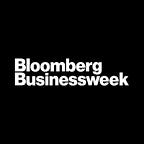No One Knows How Many of the World’s Skin-Lightening Creams Are Tainted With Mercury
Tests keep turning up the toxic element, even in products the manufacturers claim are safe
By Sheridan Prasso and Vernon Silver
The mercury hunters of Manila were on a mission. Having paid an undercover visit to a neighborhood market, they returned to their office in an apartment block on the city’s outskirts to assess the haul of skin-lightening creams.
At a table in the headquarters of the EcoWaste Coalition, chemical safety campaigner Thony Dizon readied his investigative tool: an X-ray fluorescence analyzer, or XRF. He unlocked the ray gun’s hard-shell case, lifted the device, and aimed it into a small white jar containing an avocado-colored cream. The XRF took a few seconds to flash its red light, blast its rays, and then measure the photons emitted back by the contents. Blink, blink, blink … “FAIL,” the device read.
The $5 jar, labeled Goree Beauty Cream with Lycopene, registered 23,000 parts per million of mercury, according to the XRF. A mere 1ppm is considered dangerous. In a second test, a jar labeled Goree Day & Night Whitening Cream measured 19,900ppm. Both products are banned by the Philippines Food and Drug Administration, following similar tests by…
